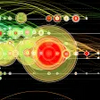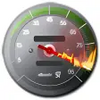A utility that can help you understand patterns in important scientific papers and other types of literature
A utility that can help you understand patterns in important scientific papers and other types of literature
Vote: (1 votes)
Program license: Free
Version: 5.7.R2
Works under: Windows
Vote:
Program license
(1 votes)
Free
Version
5.7.R2
Works under:
Windows
Pros
- Interactive visualizations of complex bibliometric data
- Integration with major scientific databases such as Web of Science and Scopus
- Automatic cluster labeling for easy identification of patterns
- Supports hybrid node and link types for a thorough analysis
- User-friendly interfaces to streamline data acquisition
Cons
- May have a learning curve for new users unfamiliar with data visualization
- Reliance on external databases for data acquisition
- The extensive depth of features might be overwhelming at first
Comprehensive Analysis and Visualization with CiteSpace
CiteSpace offers a powerful suite of tools for researchers and academics looking to explore and analyze the structural and temporal patterns within scientific fields. This data visualization application is specifically crafted for knowledge domain visualization, enabling users to sift through extensive bibliometric data and unravel the intricate connections that drive the evolution of various academic disciplines.
Robust Data Interpretation Capabilities
CiteSpace excels in transforming reference information from established scholarly databases, such as Web of Science, Scopus, Dimensions, and the Lens, into comprehensible visual representations. This allows for a multi-faceted examination of information spaces, equipping researchers with visual analytic functions for unearthing patterns, trends, and key talking points within their respective fields. Even datasets without explicit reference-related information, like those from PubMed, CNKI, ProQuest Dissertations, and Theses, can be effectively managed by CiteSpace, offering fundamental visual analytical functionalities.
Visualization and Domain Analysis
Packed with a plethora of features, CiteSpace is adept at identifying areas of rapid growth, determining hotspots in the plethora of publications, and breaking down networks into meaningful clusters. The tool automatically labels these clusters using terms from citing articles, giving a clear and concise comprehension of the connections and patterns within. Geospatial plotting of collaborations and distinctive areas of global scientific partnership are just a couple of examples of the insights that CiteSpace can provide to researchers.
Ease of Use and Data Support
The utilization of CiteSpace is relatively straightforward – researchers simply search for topics of interest within the Web of Science and import the search results into the application. From there, CiteSpace takes over, effectively parsing and managing the extracted data. Moreover, CiteSpace offers direct interfaces to streamline data acquisition from various platforms like PubMed, arXiv, ADS, and NSF Award Abstracts, ensuring a smooth workflow for the user.
Hybrid Networks and Progressive Visualization
CiteSpace is unique in its support for hybrid networks involving different node types such as terms, institutions, and countries, and hybrid link types like co-citation, co-occurrence, and direct citation links. This gives an unparalleled depth to the analyses, making it possible to conduct both basic and intricate temporal studies of diverse scientific publication networks. It includes author co-citation networks, collaboration networks, and document co-citation networks, catering to a wide range of research needs.
A Tool Designed for In-Depth Inquiry
CiteSpace is not just a visualization tool but is intended to facilitate inquiries about a specific information domain. The term 'information domain' is broad and can span across any scientific field, research area, or scientific discipline. It’s up to the user to compile the most appropriate dataset that is capable of addressing specific research questions, which CiteSpace then helps to analyze in depth.
Summary
In summary, CiteSpace stands out as an essential software for those involved in the analysis and demystification of trends in scientific literature. Through its interactive visualizations and supportive features, it enables a comprehensive look into the evolving landscape of various research areas. Understanding and interpreting complex information domains become noticeably more manageable with the aid of this robust analytical tool.
Pros
- Interactive visualizations of complex bibliometric data
- Integration with major scientific databases such as Web of Science and Scopus
- Automatic cluster labeling for easy identification of patterns
- Supports hybrid node and link types for a thorough analysis
- User-friendly interfaces to streamline data acquisition
Cons
- May have a learning curve for new users unfamiliar with data visualization
- Reliance on external databases for data acquisition
- The extensive depth of features might be overwhelming at first


